Learn the lingo: 7 terms for AI beginners
I’m new to the world of AI and became fascinated with the new vocab I was picking up on a daily basis working at Robin. Here are my top terms to kick off your AI education.
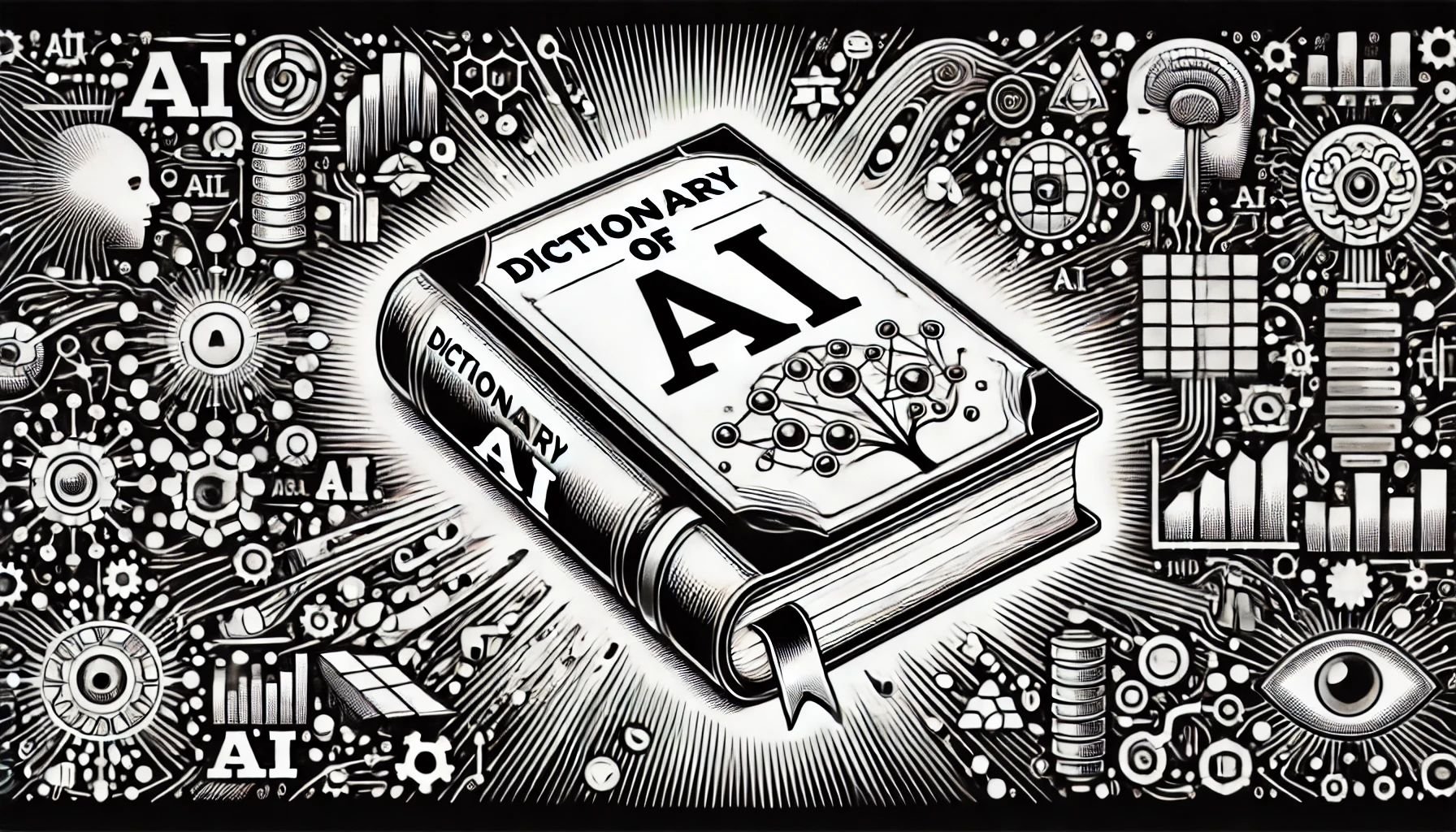
AI
I’ll start at the very beginning - the term AI, or artificial intelligence, has been around for decades, it was coined in the 1950s, but has moved into mainstream life in the last few years with the release of ChatGPT.
AI can be a little hard to define - think of it as any machine or software program that can come up with it’s own ideas, and perform tasks that typically require human intelligence.
These tasks include: understanding language, recognising patterns, solving problems, and making decisions.
Recently plenty of things have being labelled “AI”, so it’s starting to lose its meaning a little.
But, in essence, AI enables computers to learn from experience, adapt to new information, and carry out activities in a way that mimics human thinking and behaviour.
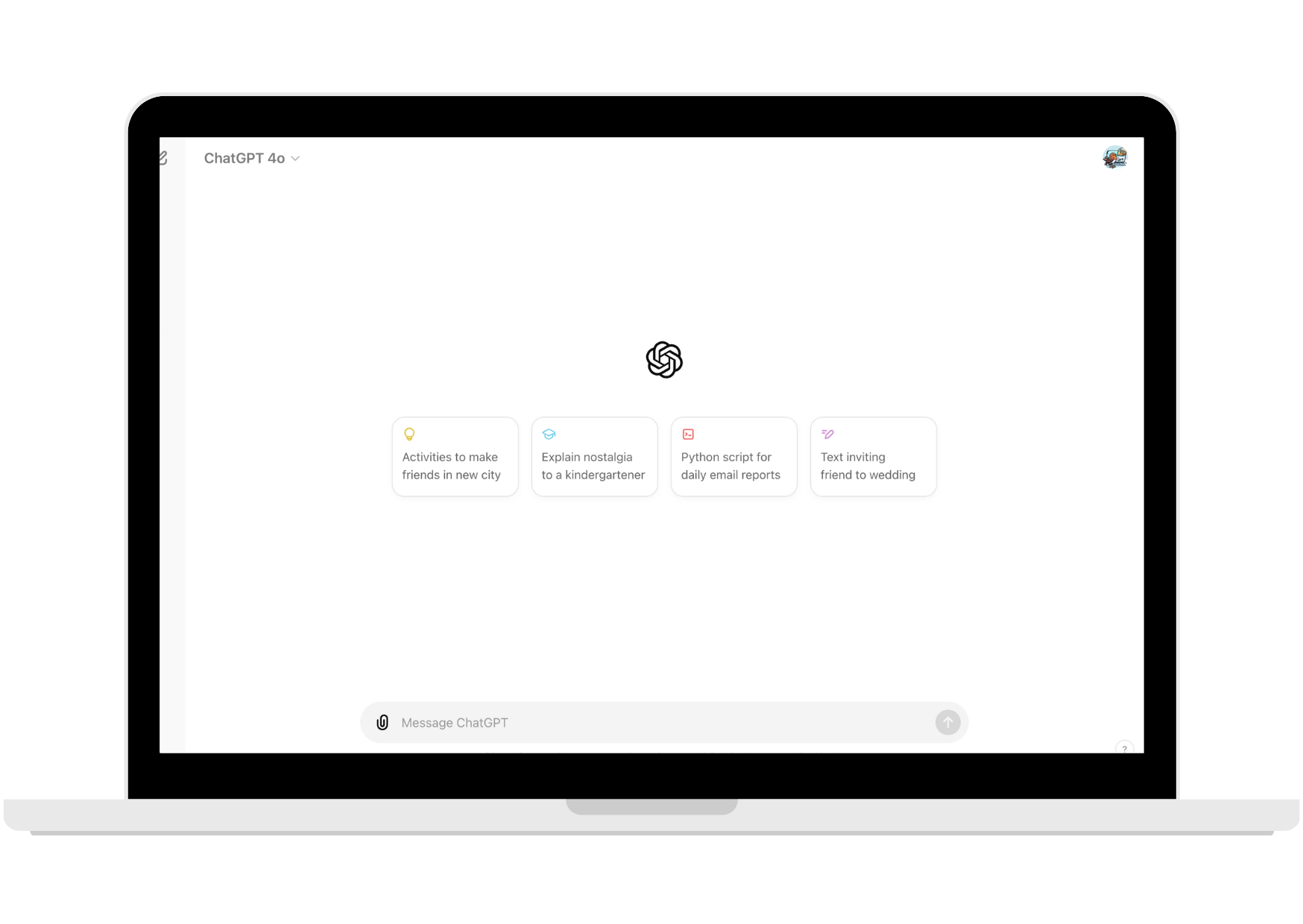
Machine learning
So this is one of the ways that AI is built.
Imagine teaching a computer to recognise pictures of cats.
Instead of telling it exactly what a cat looks like, you show it thousands of pictures of cats and not-cats. The computer looks for patterns in the images, like shapes and colours, and figures out on its own what makes something a cat. As it sees more pictures, it gets better at telling cats from other animals.
In simple terms, machine learning is about helping computers learn from examples so they can make decisions or predictions on their own.
You’ve probably seen this in action with facial recognition, when your mobile matches your photos to your contacts.
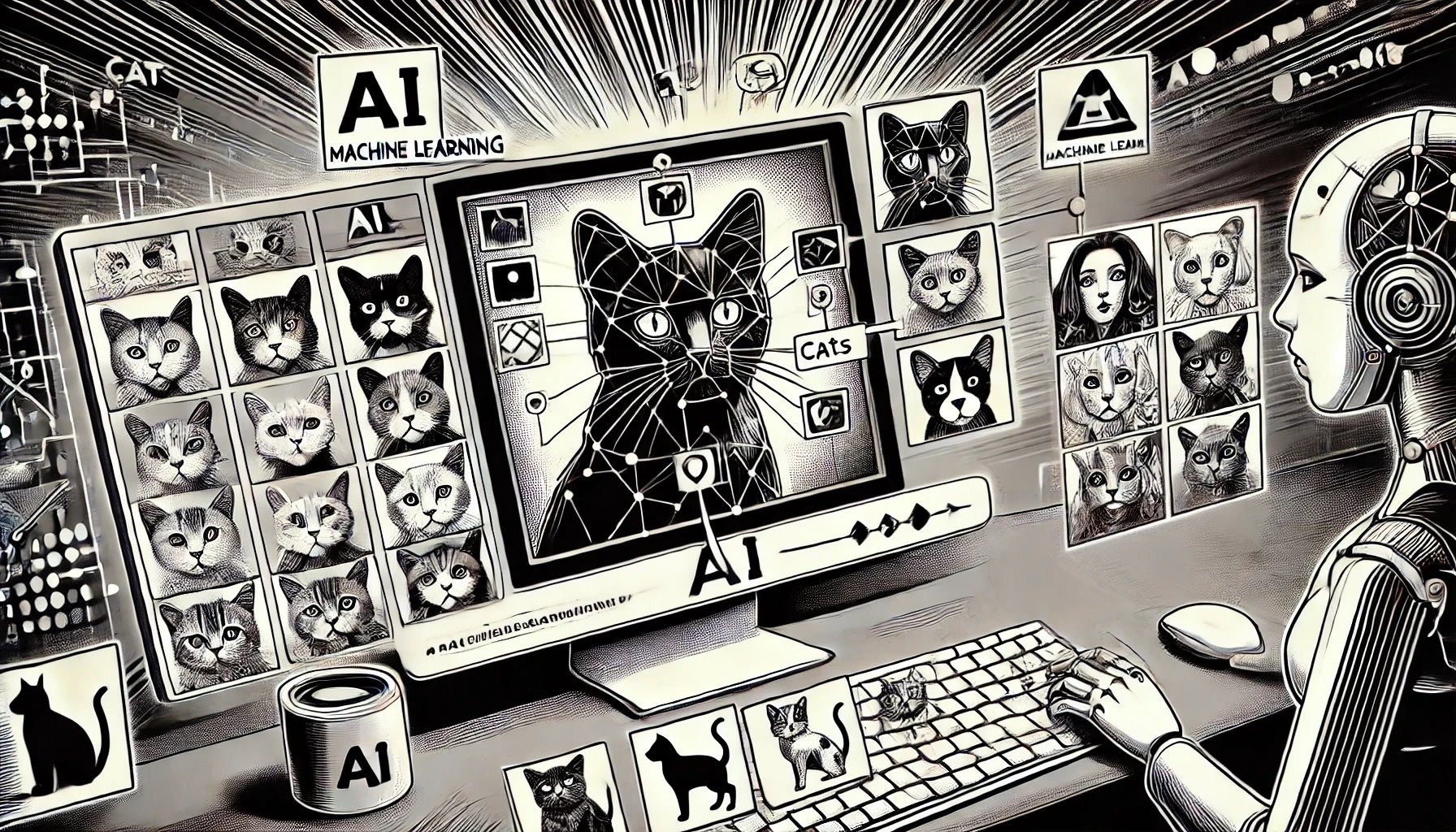
LLMs
You may have heard of these - it’s short for Large Language Models.
They’re a type of artificial intelligence - built using machine learning - that’s been trained on vast amounts of text data to understand and generate human-like language.
Imagine it like a super-smart computer programme that has read a huge amount of books, articles, and websites, so it can answer questions, write essays, or even have conversations with people.
The model learns patterns in language, such as grammar, facts, and context, by analysing the text it was trained on. Then, when you ask it a question or give it a task, it uses what it has learned to generate a response that makes sense.
Robin uses LLMs to extract data from thousands of school documents and webpages.
OpenAI
Is a company founded in 2015 and backed by Microsoft.
They’ve been at the forefront of the recent advances in AI with technology such as GPT-4o (an LLM that’s used for ChatGPT) and DALL-E (software that creates images and art from a user’s description).
In November 2022 they also released a consumer facing chatbot, ChatGPT or Chat Generative Pre-Trained Transformer, that’s built on top of these technologies, and that triggered the recent frenzy around AI.
At Robin we use LLMs proved by OpenAI. But the data, which is entirely based on publicly-available information from the DfE or school and trust websites, is not used to train the underlying AI models provided by OpenAI.
Read more about Robin’s data use and privacy.
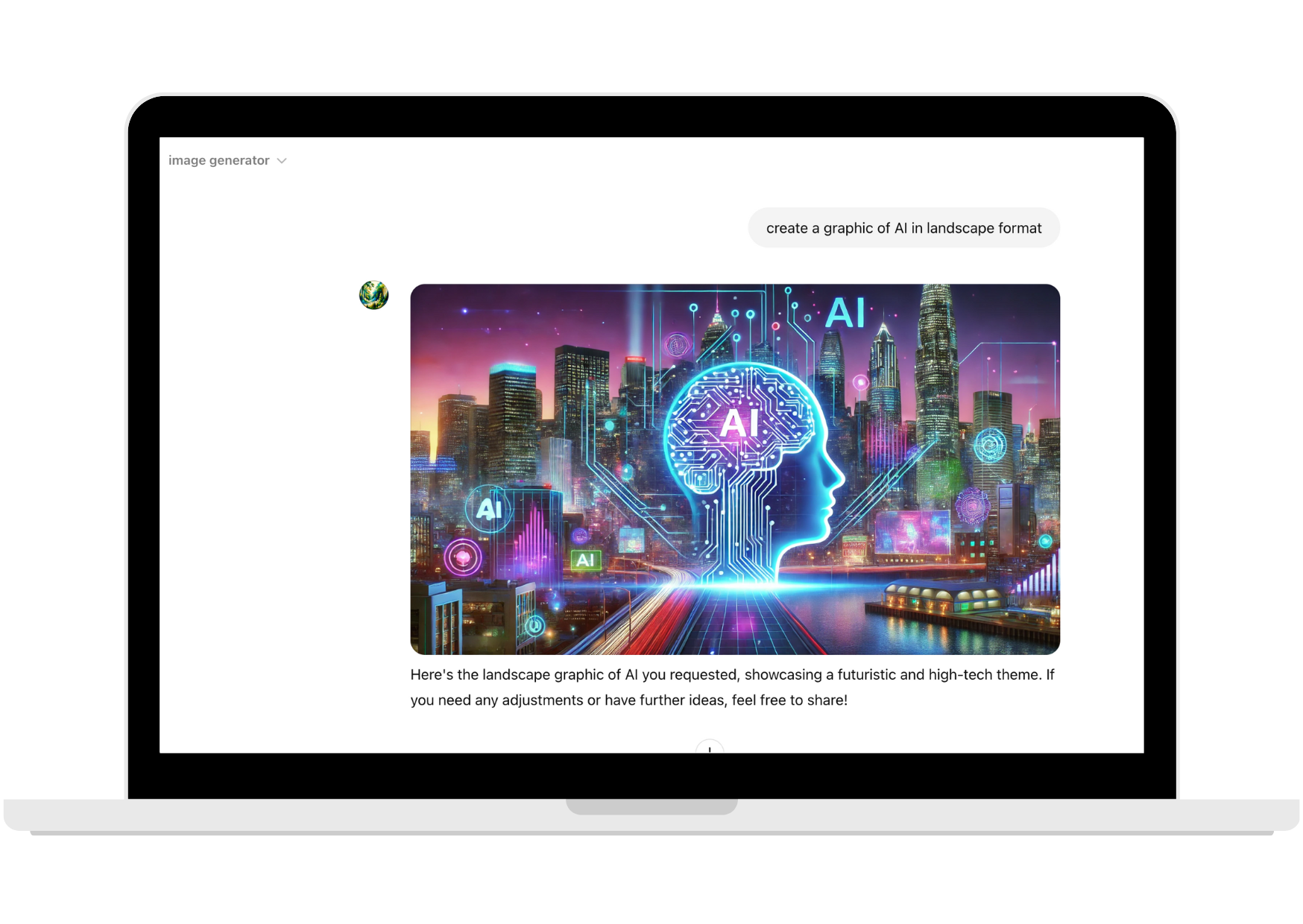
Generative AI
Is a type of artificial intelligence that creates new things, like text, images, music, or even videos, based on patterns it has learnt from existing data.
This includes the OpenAI products and chatbots.
Robin’s website reports are also an example of Generative AI, where we read a website or policy and the output is our reports showing things like review dates, or supporting information.
Get a free website review for a school in your trust
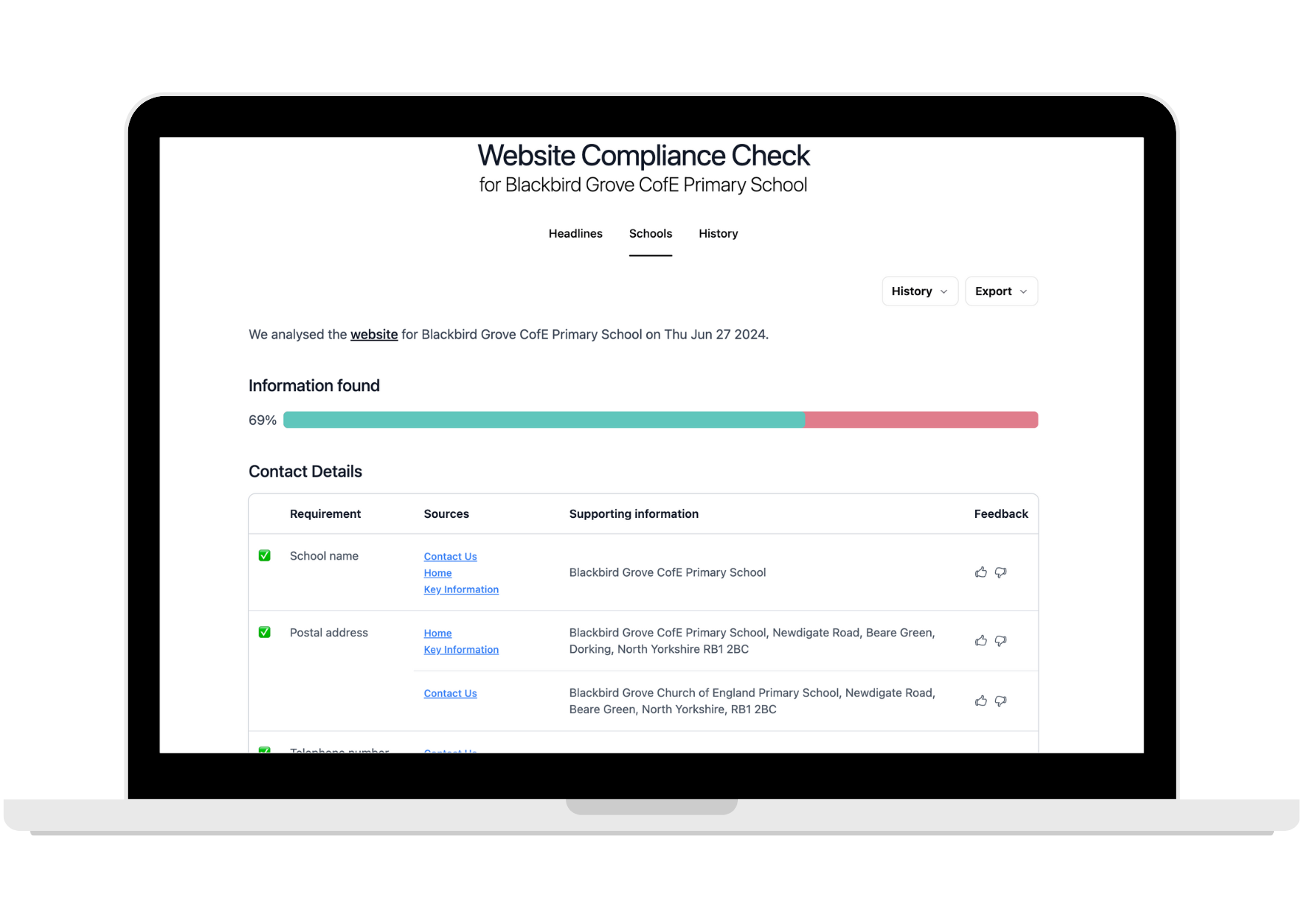
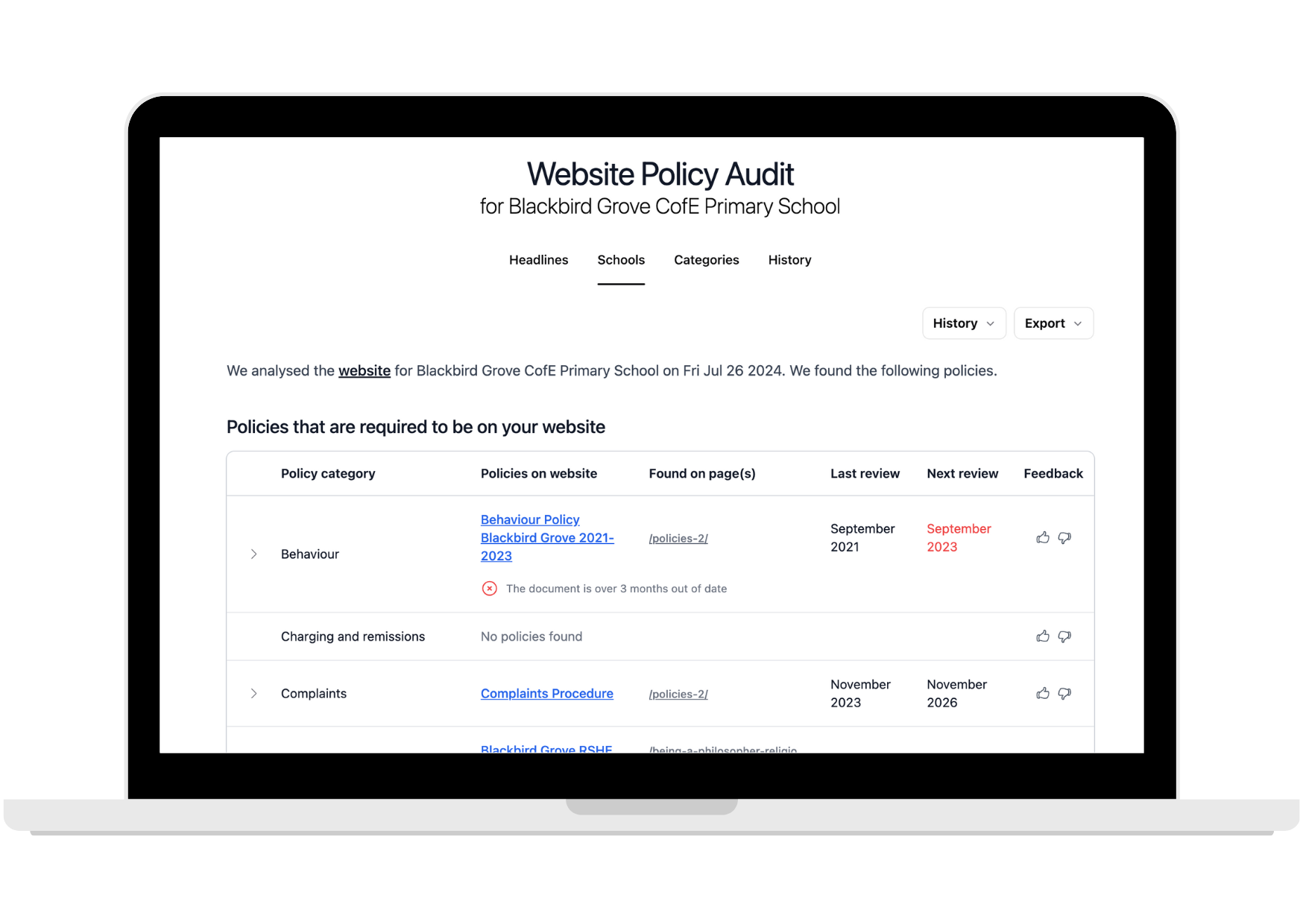
Prompts
We talk about these a lot at Robin.
They’re the text or the instruction that you pass into an LLM, which then generates a result.
So if you’re using ChatGPT the message you write gets turned into the prompt for OpenAI’s LLMs, for example GPT-4o.
At Robin, prompts can be simple instructions or complex requests.
For checking a certain website requirement Robin has a unique list of prompts that can include a lot of content and be pretty long.
When we’re trying to get the correct review dates from a policy document we include specific instructions within each prompt to make sure we get a useful output. For example:
If a number could be a day or a year, interpret it as a year. For example “May 23” should be interpreted as “May 2023” and not “May 23rd”.
If a date is “Valid from: Autumn 2023” use the start of autumn (e.g. September 2023)
And, we can have over 100 different instructions like these in a prompt, to make sure we provide the right results.
Prompt engineering
This is the process of crafting and refining prompts, and it’s quite an art.
As the weeks go by Robin’s prompts get more and more sophisticated. Robin gets smarter and provides even more accurate results.
In many cases we’re nearly at 100% accuracy.
Read more about how accurate Robin is.
What now…
Try Robin and see how AI can work in your trust
Learn more about Robin
Read our article: How Robin works
Get in touch
We’d love to hear from you, email us at [email protected]